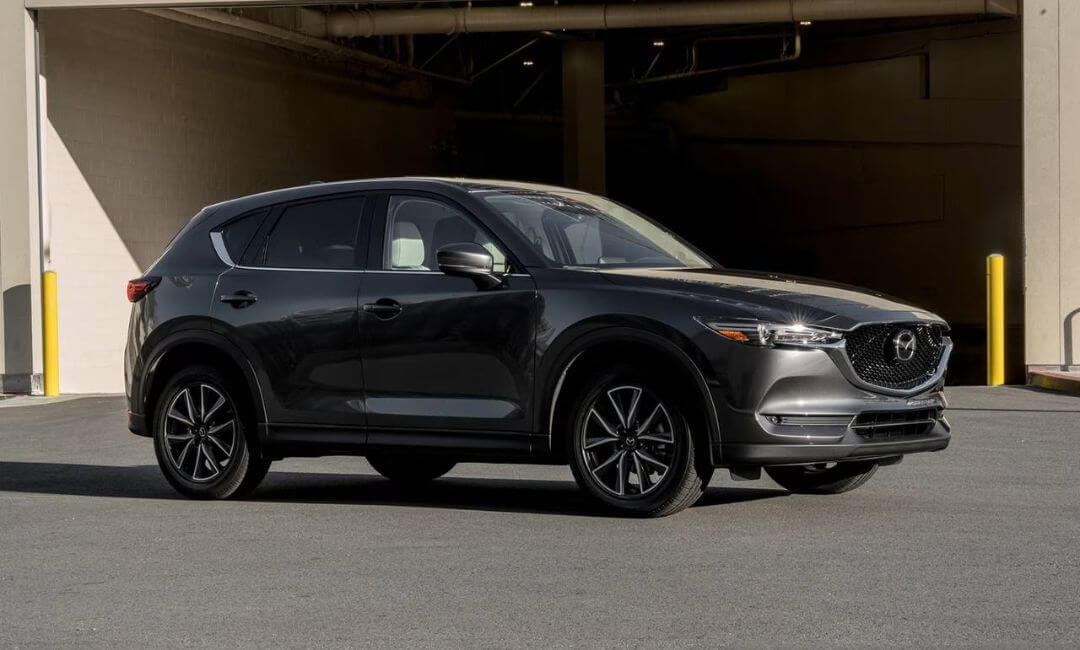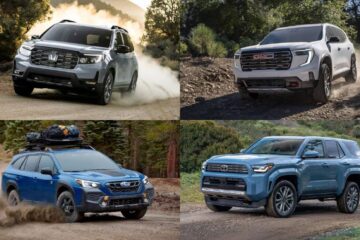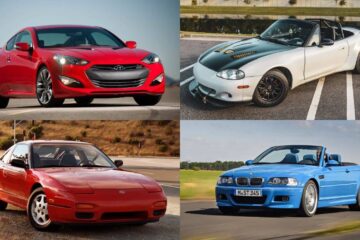The Mazda CX-5 has earned a solid reputation as an all-around compact SUV with its fun drive, high-end interior, and overall reliability. Mazda CX-5 is widely known as a compact SUV. However, as with any car, not every CX-5 model year is equally reliable. Others suffer from chronic mechanical issues, electrical issues, or both, making ownership a frustrating experience in some years.
If you are considering buying a used Mazda CX-5, knowing what years should be avoided saves you a lot of time, money, and headaches in the future. Since its introduction almost a decade ago, owners have reported problems with various Mazda CX-5 models. Still, some CX-5 years are worse than others.
This guide summarizes the most concerning Mazda CX-5 years, according to Mazda CX-5 owner feedback, expert reliability ratings, and data from trusted sources such as JD Power and NHTSA. You will also learn the most common problems owners experience with their cars, including engine, brake, and infotainment failure. Finally, we will reveal the best model years to buy for a Mazda CX-5 so you can confidently decide.
Must Check: Best and Worst Years for the Mercury Monterey V6 Van to Buy
Why Some Mazda CX-5 Years Should Be Avoided

The Mazda CX-5 is widely acclaimed as the stylish, fuel-efficient, fun-to-drive choice among compact SUVs. Unfortunately, that praise hasn’t always been applied to every model year. This means problems like engine stalling, transmission failure, busted infotainment systems, and brakes that wear out faster than they should in some CX-5 years are not your problem! These issues can affect performance and lead to costly repairs, making some model years less desirable for used car buyers. IIHS research reveals specific issues with certain model years.
By analyzing data from various sources, including sales data, recalls, Consumer Reports, and J.D. Power, we identified specific model years with common problems.
That makes knowing which Mazda CX-5 years to stay away from before optimal purchase crucial. Whether you’re in the market for a used SUV or want to know which trouble spots to be aware of to help yourself make a better long-term decision, learning these issues could help. This guide will help you by using real-world complaints and expert ratings to break down the worst Mazda CX-5 years that you should try to avoid to prevent unexpected trips to the shop so you can enjoy a much more reliable ride.
#1. 2013 Mazda CX-5
Worst Problems:
- Excessive oil consumption
- Faulty infotainment system
- Complaints related to an underpowered engine
- Delayed throttle response
The 2013 Mazda CX-5 was brand new and debuted the first model year atop a new platform. Unfortunately, it did have some first-year issues. These issues include but are not limited to, common complaints regarding excessive oil consumption beginning as soon as 60,000 miles. While the 2.0L Skyactiv was a great engine for its fuel economy, reviewers felt it to be a bit underpowered and slow to merge on the highway.
Driver requests and complaints requests and complaints claimed parasitic drain from the infotainment system, glitching Bluetooth, and screen freezes. These are not deal breakers for every person, but all their outcomes are high-priced, out-of-warranty repairs.
#2. 2014 Mazda CX-5
Worst Problems:
- Engine oil loss
- Misfiring on acceleration
- Highway speed wind noise
- Touchscreen malfunctions
Sadly, the 2014 CX-5 follows the 2013 model’s lead with an unchanged engine and platform — many of the same problems. More serious, and potentially leading to catastrophic engine failure if neglected, was engine oil burning, a problem that continued to plague owners. Acceleration lag and gas pedal hesitation also infuriated a slew of drivers.
Comparative complaints from within, like wind noise and door rattling, meant the ride felt less refined alongside its rivals. Despite strong safety ratings, customer reviews saw a drop in overall reliability this year.
#3. 2016 Mazda CX-5 –
Worst Problems:
- Jerky transmission shifting
- Navigation system freezing
- Delaminating the infotainment screen
- Brake wear at low mileage
The 2016 model saw advancements in performance and aesthetics, but it remained on the avoid list for specific issues. The automatic transmission tended to jerk or hesitate, especially when upshifting from first to second.
One of the more regular complaints was infotainment screen delamination where the screen turns cloudy or bubbles from bond failure. This can cost a lot to repair and is a nuisance. Finally, some owners experienced early brake wear at 30,000–40,000 miles–not the norm for a compact SUV.
#4. 2018 Mazda CX-5
Worst Problems:
- Battery drainage
- Faulty electrical system
- Brake pedal noise
- Windshield cracking easily
This CX-5 was part of the second generation, introducing more refined styling and powerful engines. However, there were reliability issues, particularly with the electrical system. Some owners told us about the phantom battery drain, in which their parking EV would die after only one or a few days of parking.
They also complained of clicking from the brake pedal and early wear. A few drivers also said that the windshield was susceptible to cracking from small hail, likely due to the thinner glass.
It’s certainly not a year to panic, but the 2018 CX-5 is a year of caution — so far, at least if these issues haven’t been remedied.
Common Mazda CX-5 Problems Across Model Years

Nobody’s saying even the best model years are free from recurring issues. Watch out for the following commonly reported Mazda CX-5 problems.
1. Excessive Oil Consumption
2013 and 2014 models were notorious for drinking oil at an above-average rate. If not addressed, this problem can damage the engine.
2. Infotainment System Failures
Over the years, owners have suffered from freeze-up of the screen, delamination, and random reboots. You could add fuel to those flames for 2016–2018 models, although later versions fared better.
3. Transmission Hesitation
Others have complained of jerky shifts or hesitating to accelerate, particularly with automatics. It’s not uncommon to test-drive for these, but they’re not a hot topic either.
4. Electrical Glitches
At least for 2018, sites like JD Power have noted problems from battery drain to malfunctioning sensors to warning lights coming on with no apparent issue.
5. Rattles Inside and Build Quality
Several drivers complained of rattling from the dashboard and doors, ultimately detracting from overall ride quality, especially for earlier models (2013–2015).
Read More:
- Dodge Journey Years to Avoid Some Are Real Headaches
- Chevy Equinox Years to Avoid Are These Models a Risky Buy
- 10 Best Gas Mileage Cars Under $10K and Still Get 30 to 40 MPG Easily
Mazda CX-5 Years That Are Safe to Buy

With that out of the way, let’s turn things around and look at the best Mazda CX-5 model years—the ones that return the most potent blend of performance, safety, and above-average long-term reliability. Here are the model years that owners love, and experts recommend year after year.
#1. 2015 Mazda CX-5
The first-generation CX-5 still stands out as one of the most reliable options from that vintage, especially the 2015 model year. It fixed many of the problems that affected previous generations, most notably oil burning and brakes. Thanks to good fuel economy, nimble handling, and greater refinement this year, it remains a solid choice for budget-minded consumers.
#2. 2017 Mazda CX-5
Using the launch year of the second generation, the 2017 CX-5 rolled out new styling, improved sound insulation, and some new tech. The smooth ride, sporty feel, and upscale interior impress drivers. Most importantly, though, it gets high marks for dependability and safety, making it a good choice for both families and commuters.
#3. 2020 Mazda CX-5
For 2020, there is a cleaner engine lineup–a turbocharged engine included—and more standard driver-assist features. It skips the electrical problems we’ve seen in vehicles from earlier years, such as 2018, and scores well regarding owner satisfaction and safety ratings.
#4. 2022–2023 Mazda CX-5
These newer models are essentially the most refined iterations of the CX-5. These years are fantastic because they come with standard all-wheel drive, upgraded suspension, and updated infotainment systems. Reliability is still very good, and there have been few consumer complaints. If you have the money to pull it off, these represent the elite options for anyone searching for modern features and peace of mind.
Tips for Buying a Used Mazda CX-5

Search for a Used Mazda CX-5 Near You. With its athletic handling, high-end interior quality, and solid reliability scores, this compact SUV is the best of many worlds in this segment. But like any pre-owned rig, you should gather information prior to purchasing. We provide helpful tips for the best deal on a second-hand Mazda CX-5.
1. Check the maintenance history
Inquire about service histories in depth. Look for a consistent history of oil changes, brake services, and other routine maintenance to guarantee that the CX-5 was well cared for. But, of course, if records are inconsistent or nonexistent, you should probably move on.
2. Research recalls
Before you buy, check the NHTSA website for any active recalls for the model year you are considering. These problems can sometimes be minor and can, in other cases, impact safety and performance.
3. Get a pre-purchase inspection
Investing a small sum in a qualified mechanic today will save you thousands later. A pre-purchase inspection will identify hidden faults, such as suspension issues or transmission trouble.
4. Test all electronics and features
Worn out, harmful, or no tech on used cars? During your test drive, ensure that small electronics, including the infotainment screen, backup camera, power windows, and other features, usually function.
5. Avoid base trims when possible
So, if you’re due for an upgrade, opting higher in trims such as Touring, Grand Touring, or Signature typically brings advanced safety features, a more robust infotainment system, and superior resale value. With newer components, they have also been known to have fewer reported issues.
Remembering these tips can help you shop better and with more confidence. The CX-5 can be an excellent used SUV—ensure you get one that’s been taken care of.
Conclusion
Speaking of which, the Mazda CX-5 remains a solid choice if one is careful about avoiding the wrong years.This compact SUV impresses with its premium styling, sporty handling, and decent fuel economy. Whether it be your daily driver or weekend trips, the CX-5 is plush enough to make you question the more expensive brands.
However, steer clear of the 2013 and 2014 models, which are plagued by engine and transmission problems, and be careful about the 2016 and 2018 versions, thanks to infotainment quirks and electrical problems. The best choice would be 2015, 2017, or a model from 2020 and after—they are relatively reliable, often perform better, and have modern updating.
Overall, the CX-5 remains an attractive option for value-oriented shoppers looking for an upscale utilitarian while not compromising on refinement or practicality.




